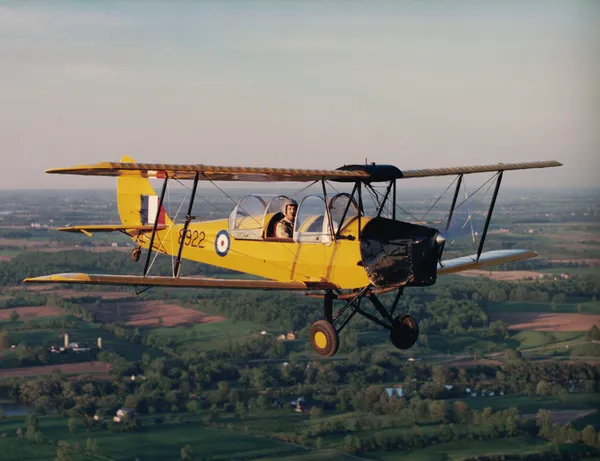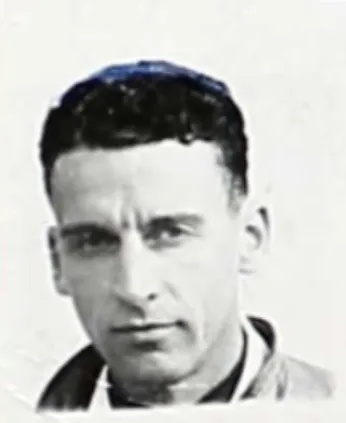Macguire, Frank
Killed in Flying Accident 1940-11-21


Birth Date: 1913-October-20
Born:
Son of William and Regina Macguire, of Moose Jaw; husband of Marian Roberta Macguire, of Moose Jaw.
Home: Moose Jaw, Saskatchewan
Enlistment:
Enlistment Date: Unknown
Service
RCAF
Unit
Flying Club
Base
Moose Jaw, Saskatchewan, Canada
Rank
Aircraftman 2nd Class
Position
Aircraftman 2nd Class
Service Numbers
R/79531
First Burial
 Rosedale Cemetery, Moose Jaw, Saskatchewan
Rosedale Cemetery, Moose Jaw, Saskatchewan
This incident involved multiple aircraft:
- Moth, Tiger I Serial: 4128
All the above aircraft in the above list are referenced in this report.
de Havilland DH 82 Tiger Moth

The de Havilland DH.82 Tiger Moth is a 1930s British biplane designed by Geoffrey de Havilland and built by the de Havilland Aircraft Company. It was operated by the Royal Air Force (RAF) and many other operators as a primary trainer aircraft. In addition to the type's principal use for ab-initio training, the Second World War saw RAF Tiger Moths operating in other capacities, including maritime surveillance and defensive anti-invasion preparations; some aircraft were even outfitted to function as armed light bombers.
The Tiger Moth remained in service with the RAF until it was succeeded and replaced by the de Havilland Chipmunk during the early 1950s. Many of the military surplus aircraft subsequently entered into civil operation. Many nations have used the Tiger Moth in both military and civil applications, and it remains in widespread use as a recreational aircraft in several countries. It is still occasionally used as a primary training aircraft, particularly for those pilots wanting to gain experience before moving on to other tailwheel aircraft.
Overseas manufacturing of the type commenced in 1937, the first such overseas builder being de Havilland Canada at its facility in Downsview, Ontario. In addition to an initial batch of 25 Tiger Moths that were built for the Royal Canadian Air Force (RCAF), the Canadian firm began building fuselages which were exported to the UK for completion. Canadian-built Tiger Moths featured modifications to better suit the local climate, along with a reinforced tail wheel, hand-operated brakes (built by Bendix Corporation), shorter undercarriage radius rods and the legs of the main landing gear legs being raked forwards as a safeguard against tipping forwards during braking. In addition the cockpit had a large sliding canopy fitted along with exhaust-based heating; various alternative undercarriage arrangements were also offered. By the end of Canadian production, de Havilland Canada had manufactured a total of 1,548 of all versions.Wikipedia
Moth, Tiger 4128
Moth, Tiger I 4128
Category A damage on 21 November 1940, 4 miles east of Moose Jaw, Saskatchewan. The Aircraft crash card indicates that the crash occurred at the unit the "Moose Jaw Flying Club" and both members service files show the members posted to No 4 Training Command. Flight Sergeant Scott was assigned as an RCAF instructor at the Moose Jaw Flying Club. Sgt. J.H. Scott and Leading Aircraftman F. MacGuire killed.Originally reported as "Accident reported by No. 32 Service Flying Training School at Moose Jaw, aircraft was probably with No. 15 EFTS at Regina at the time."
1940-08-22 Taken on Strength 2019-08-20
1940-November-21 Accident: MOOSE JAW FLYING CLUB Loc: Moose Jaw Saskatchewan Names: Macguire | Scott
1941-03-03 Struck off Strength 2019-08-20
 Canadian Virtual War Memorial
Canadian Virtual War Memorial Commonwealth War Graves Commission
Commonwealth War Graves Commission www.findagrave.com
www.findagrave.com
 Wikipedia de Havilland Tiger Moth
Wikipedia de Havilland Tiger Moth Harold A Skaarup Web Page
Harold A Skaarup Web Page YouTube de Havilland DH.82A Tiger Moth
YouTube de Havilland DH.82A Tiger Moth